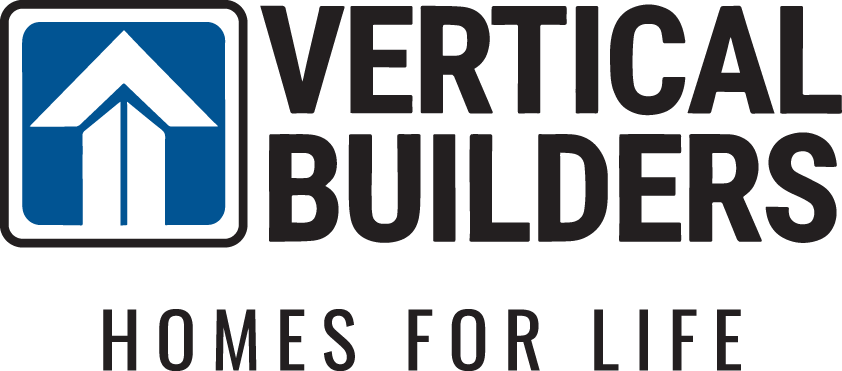Blog
Building a New Home vs. Buying an Older Home: Which Is Right for You?

April 30, 2025
When it comes time to look for a new place to live, homebuyers first face a major choice: build a new home or buy an older home? Both choices have their benefits, but building a new home offer many advantages that could make it the better choice for you. From customization options to increased efficiency, let’s take a look at what the benefits are.

1. Customization to Fit Your Lifestyle
One of the biggest advantages of building a new home is your ability to design it exactly how you want. In a preexisting home, your layout, finishes, and number of rooms are already set. With a new build, you can pick a floor plan that fully meets your needs, making sure you have the desired number of bedrooms, a home office or space for entertaining, or a first-floor primary bedroom. Is an open concept kitchen or covered porch looking over a spacious backyard on your wish-list? Building a new home is the best way to get the most features that you truly want to fit your lifestyle.
2. Energy Efficiency and Sustainability
New homes are built with the latest energy-efficient materials and technology, which usually makes them more eco-friendly and cost-effective in the long run. Newly built homes feature high-efficiency HVAC systems, better insulation, and energy-efficient windows and appliances. These improvements not only lower utility bills but also reduce your overall carbon footprint. Older homes will often require costly upgrades to improve energy efficiency; you might need to replace outdated heating systems or add better insulation to bring down your monthly energy costs.
3. Fewer Maintenance and Repair Costs
Buying an older home often comes with unexpected maintenance and repair expenses. Aging electrical, plumbing, and roofs can lead to costly repairs that add up over time. When you build a new home, everything is brand new and under warranty. Those warranties can offer a lot of security and peace-of-mind when you’re spending the first several years in your new home.

4. Modern Features and Smart Home Technology
Today's homes are designed with modern lifestyles in mind. New builds often include state-of-the-art technology, such as smart thermostats, energy-efficient lighting, and even optional security systems. Integrating these technologies into an older home can be costly and may require extensive renovations. With a new home, you plan for the latest home features right from the start, ensuring seamless integration and convenience.

5. Designed for Modern Lifestyles
Over time, the way people use their homes has changed. Many older homes feature smaller, compartmentalized rooms that don’t suit today’s preferences for open-concept living spaces. New homes are designed with contemporary lifestyles in mind, incorporating larger kitchens, spacious primary suites, walk-in closets, and flex spaces that can be used as offices, gyms, or playrooms. They also offer plenty of storage throughout to make it easier to keep things tidy. These modern design features make new homes more functional and adaptable to evolving needs.
6. More Financing and Incentive Opportunities
Financing for a new home can be easier, with the opportunity for “2-1 Buydowns” or other incentives being available. These financial benefits can make building a home more affordable than many buyers realize. On the other hand, purchasing an older home may require additional expenses for renovations, which can quickly increase the size of the initial purchase price.
7. Peace of Mind and Fewer Surprises
When purchasing an older home, you may not always know what you’re getting. Even with a thorough inspection, hidden problems such as plumbing issues, foundation cracks, or outdated electrical systems may not be immediately evident. In contrast, a newly built home eliminates many of these concerns, as everything is built to modern standards and building codes.
8. Resale Value and Market Appeal
Newer homes can have higher resale value and be more attractive to future buyers. With up-to-date features, modern layouts, and energy-efficient systems, a new home can sell more quickly and at a higher price compared to older homes that may require extensive upgrades to bring them up to modern standards. Buyers are often willing to pay more for a move-in-ready home with modern amenities rather than take on the cost, effort, and time of renovating an older property.
Conclusion
Building a new home provides more opportunities for customization, energy efficiency, lower maintenance costs, as well as modern conveniences. If you’re looking for a home that meets your exact needs and lifestyle, minimizes unexpected expenses, and provides long-term value, building a new home can be the best choice for you.
Latest Posts
March 4, 2025
The Grove at Hamilton: Urban Oasis
February 28, 2025
Understanding a 2-1 Buydown
January 30, 2025
What is LVP? The Durable, Stylish Flooring Choice for Your Home
December 2, 2024
Choosing the Right Stone for Your Space
September 24, 2024
What to Expect in Q4 2024 and into 2025
August 16, 2024
Why Now is the Perfect Time to Buy a New Home in Central Virginia
August 12, 2024
Choosing the Perfect Community: Richmond vs. Charlottesville for Your New Home
August 12, 2024
Why Lake Anna is Becoming a Top Destination for New Home Buyers
June 28, 2024
Pocket Offices: The Ultimate Flex Spaces for Modern Living
Next Article

